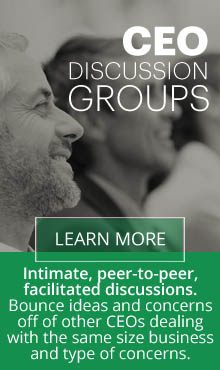This study involved 11,000 individuals from 6 industrialized parts of the globe.
Each of the 11,000 participants was asked:
“Assuming you have a choice, do you plan on remaining with your organization through the next 12 months?” – participants in the U.S. responded: Yes, definitely 56%; Probably 32%; No Way 13%. So only a little more than half (56%) of respondents say that they plan to stay with their organization through the next 12 months. And the percentage who responded “No Way” has almost doubled since 2008 when it registered at 7%.
Key findings:
-
Only 1 in 3 employees are engaged, 1 in 5 are actively disengaged, approximately 2 in 3 are looking for new positions.
Jeri’s thoughts: You can look at this as a challenging year for retention, or a hot year to attract new talent. If you’re looking to attract new talent, make sure you learn below how to keep them.
-
Engaged employees plan to stay for what they give, disengaged stay for what they get.
Jeri’s thoughts: Look at your own staff. Which people fit each category based on what you see in their behavior every day? If you don’t like what you see, whose fault is it? After all you hired them and you set up the culture in your company. What can you do to change your culture? What do you need to change about yourself in order to change your culture?
-
Top drivers of job satisfaction: opportunities to apply their talents, career development, training.
Jeri’s thoughts: Do you offer your employees opportunities to apply their talents (do you assess their talents and put them in roles that are suited to areas where each one can use their strengths?) career development (chances to be promoted to higher levels of responsibility and personal growth), training (to excel and master new skill)? What do you need to change in your organization to up your levels of talent application, career development and training? How would it benefit your organization? Some studies put the number at 30% additional productivity which drops to the bottom line pretty quickly in a small business.
-
Trust in executives can have twice the impact on engagement levels than trust in immediate managers because executives set the overall culture.
Jeri’s thoughts: The executives set the vision and lead with purpose. This engages people’s spirit and helps them feel they are contributing to something bigger than themselves. Companies that have a rally cry inspire their people to grow, contribute and believe. Think Apple with ‘Innovation’ and Zappos with ‘Delivering Happiness.’ Executives establish the values of the company. If executives lead by example, they can expect a lot from their people. If not, their people are demoralized. How do you lead? Do you inspire people to work toward a purpose? Do you stand for your values and expect others to respect the company values as well? Do you inspire people’s creativity or shoot them down whenever they make a mistake which encourages them to never show initiative?
-
Employees’ relationships with their managers as ‘people’ behind the titles impacts engagement levels more than manager actions.
Jeri’s thoughts: People are emotional beings. Training managers on emotional intelligence so that they realize the value of seeing people as unique individuals with lives, talents, concerns, goals, feelings, etc is an important part of management training and development. How do your managers do at getting the most from their people? Do your staff relate well to their managers because their managers care?
-
Engagement surveys without visible follow up action may decrease engagement levels.
Jeri’s thoughts: If you ask your staff lots of questions in a survey and then do nothing with the results, wouldn’t your staff be demoralized because you set up an expectation of change and then never fulfilled the expectation? If you ask questions, prepare to make changes based on the answers. If you’re not prepared to make any changes, don’t insult your staff by asking questions.


 Jeri Quinn from Driving Improved Results is an executive coach, management consultant, speaker and author who focuses on communication in her work with executives and companies. She is the author of The Customer Loyalty Playbook, 12 Game Strategies to Drive Improved Results in Your Business. With more than 40 years as a serial entrepreneur.
Jeri Quinn from Driving Improved Results is an executive coach, management consultant, speaker and author who focuses on communication in her work with executives and companies. She is the author of The Customer Loyalty Playbook, 12 Game Strategies to Drive Improved Results in Your Business. With more than 40 years as a serial entrepreneur.

